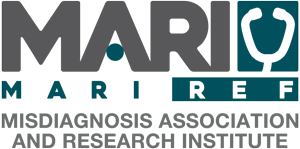Author: Anushka Pradhan
Editor: Daisy Li
Overview
Acne is a chronic inflammatory disease of pilosebaceous units which consist of the sebaceous gland, hair follicle and shaft (Kraft, 2011). It is most likely to occur in areas with high concentrations of sebaceous glands such as the face, back, and chest (Titus, 2012). It consists of characterized lesions that lead to scarring and pigmentary changes which impact quality of life by decreasing self-esteem and hindering psychosocial development (Kraft, 2011). Acne is a common condition among adolescents in the stages of puberty (Kraft, 2011).
Keywords
Acne, Acne vulgaris, Cystic Acne, Acne scars, Acne Scarring, Pimples, Blackheads, Whiteheads
What causes Acne?
All types of acne have an inflammatory basis, which is one of four main aspects of acne development (Heng, 2020). Another involves increased sebum production by glands due to hormonal factors such as hyperandrogenism (Gebauer, 2017). Proliferation of microorganisms in the sebum can also be a leading cause of acne (Fox, 2016). The formation of a follicular plug or comedo can also cause acne by hyperproliferation of keratinocytes (Gebauer, 2017).
Symptoms
The most common symptoms of Acne include the following:
- Hyperpigmentation
- Physical lesions
- Psychological Sequelae (Titus, 2012)
Risk Factors
Genetic predisposition plays a strong role in acne formation (Gebauer, 2017). Other risk factors include age, skin type, and BMI (Heng, 2020).
Diagnosis
Clinical Features
Acne lesions present as comedones, pustules, nodules, cysts, and scars. Comedones are keratin-filled plugs, pustules are sites of follicular inflammation, cysts are follicular-lined keratin-filled structures that can dilate and nodules are cysts with further inflammation. Scarring is often the end result when lesions heal (Gebauer, 2017).
Pathological Features
A thorough history and physical examination can help identify underlying risk factors such as a medication or endocrinological abnormality causing hyperandrogenism (Kraft, 2011).
Treatment Protocol
Pharmacological Treatment
Mild acne can be treated topically with retinoids, antimicrobials such as benzoyl peroxide, and antibiotics. Benzoyl peroxide prevents the resistance of the bacteria to antibiotics and so, combined use is more effective (Kraft, 2011). Retinoids reduce the formation of microcomedones of inflammatory acne (Fox, 2016). Moderate to severe acne may be treated systemically by oral antibiotics that inhibit bacterial growth or hormonal anti-androgen therapies (Fox, 2016).
Non-Pharmacological Treatment
Patients are encouraged to stop picking and scratching lesions to reduce cutaneous damage. Minimal amounts of oil-free make-up and sunscreen are recommended to prevent pores from clogging (Gebauer, 2017). Physical therapy options include comedone extraction, cryotherapy, and electrocauterization (Fox, 2016).
References
Gebauer K. (2017) Acne in adolescents. Acne in Adolescents. Australian Family Physician, 46(12), 892-895. Retrieved from https://pubmed.ncbi.nlm.nih.gov/29464224/
Fox, L., Csongradi, C., Aucamp, M., du Plessis, J., & Gerber, M. (2016). Treatment modalities for acne. Molecules (Basel, Switzerland), 21(8), 1063. DOI: 10.3390/molecules21081063.
Kraft, J., & Freiman, A. (2011). Management of acne. Canadian Medical Association Journal (CMAJ), 183(7), E430–E435. DOI: 10.1503/cmaj.090374.
Titus, S., & Hodge, J. (2012). Diagnosis and Treatment of Acne. American Family Physician, 86(8), 734–740. Retrieved from https://www.aafp.org/afp/2012/1015/p734.html.
Heng, A.H.S., Chew, F.T. (2020). Systematic review of the epidemiology of acne vulgaris. Sci Rep 10, 5754. DOI: 10.1038/s41598-020-62715-3
